Propain Tyee 6.1
Wheel Sizes:
- XS–M: 27.5’’ front and rear
- M–XL: 29’’ front / 27.5’’ rear, or 29’’ front and rear options available
Suspension Travel:
- Frame: 160 mm
- Fork: 170 mm
Geometry Highlights:
- Sizes offered: XS, S, M, L, XL
- Headtube angle: 62.8 –63.9°
- Reach (size Large, 29’’ wheels): 473 mm
- Chainstay length (size Large): 445 mm
Frame Material: Aluminum and carbon fiber versions available
Price:
- Complete bikes starting at $3,399 USD (details in Builds section below)
- Frame kits starting at $1,869 USD (details in Builds section below)
Blister’s Measured Weight (Custom Build w/DHX2 Coil, size L, w/o pedals): 35.8 lbs / 16.26 kg
Test Locations: Utah, Washington, South Carolina, North Carolina, New York
Reviewers:
- Xan Marshland 5’10”, 160 lb / 178 cm. 72.6 kg
- David Golay: 6’, 160 lb / 183 cm, 72.6 kg
Test Duration: 2 months
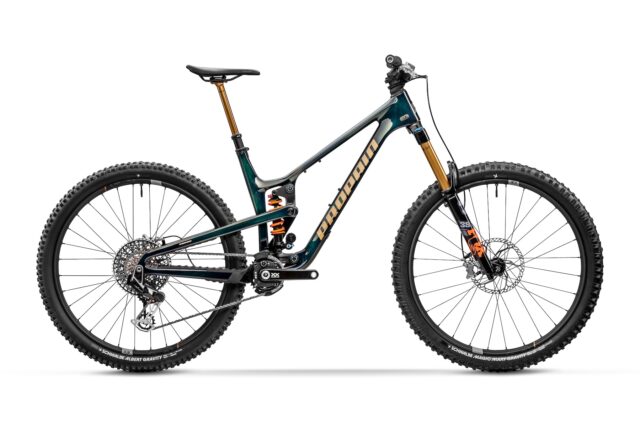
Intro
Propain’s Tyee underwent a sizable update in 2023, seeing new geometry, suspension kinematics, and frame construction techniques. Much like they did with the Rage Downhill bike earlier this year, Propain has found a number of smaller refinements to make to the Tyee, both via small construction improvements and an overhauled set of build options and colors.
We rode the Tyee last year and found it to be a very playful take on a modern Enduro bike. We have one of the new bikes headed our way, but in the meantime, let’s dig into the details of what they’ve changed from the last Tyee.
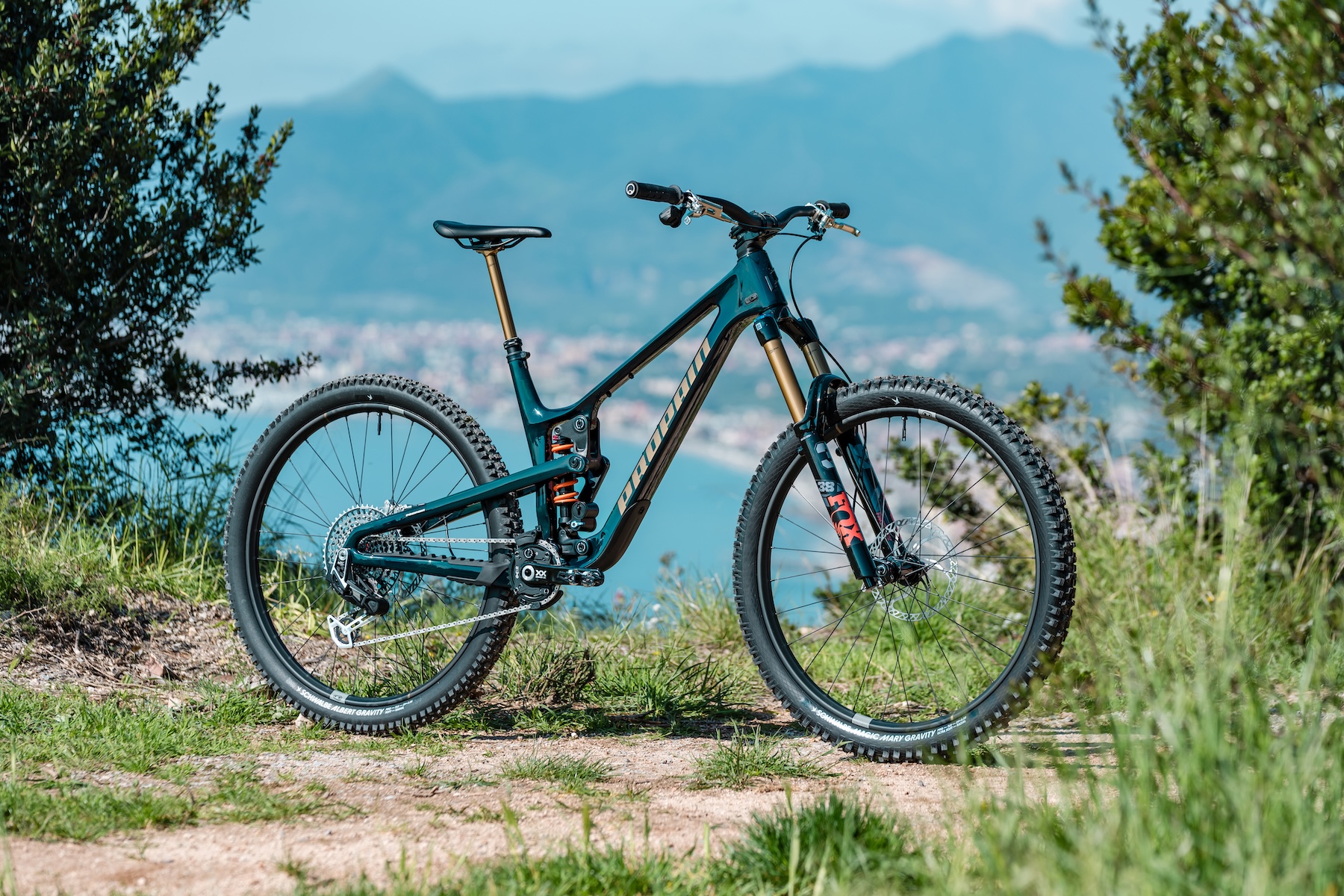
The Frame
Fans of the prior Tyee will be pleased to hear that Propain hasn’t changed many of the key aspects of the prior Tyee’s design. The frame itself is still offered in carbon or aluminum, along with options for multiple wheel sizes. XS and Small sizes are only available in a 27.5’’ version, while size Medium can be had in full 27.5’’, a mixed wheel setup, or full 29’’. Large and XL sizes lose the 27.5’’ option, with mixed wheel or 29’’ setups on offer.
The XS, Small, and 27.5’’-specific Medium frames are designed to only be run with 27.5’’ wheels front and rear, with a flip chip providing geometry adjustment. That flip chip persists on the Medium, Large, and XL frames, but is primarily used to allow conversion between mixed wheel and 29’’ options. There is an exception to that rule, which we’ll get into in the geometry section below.
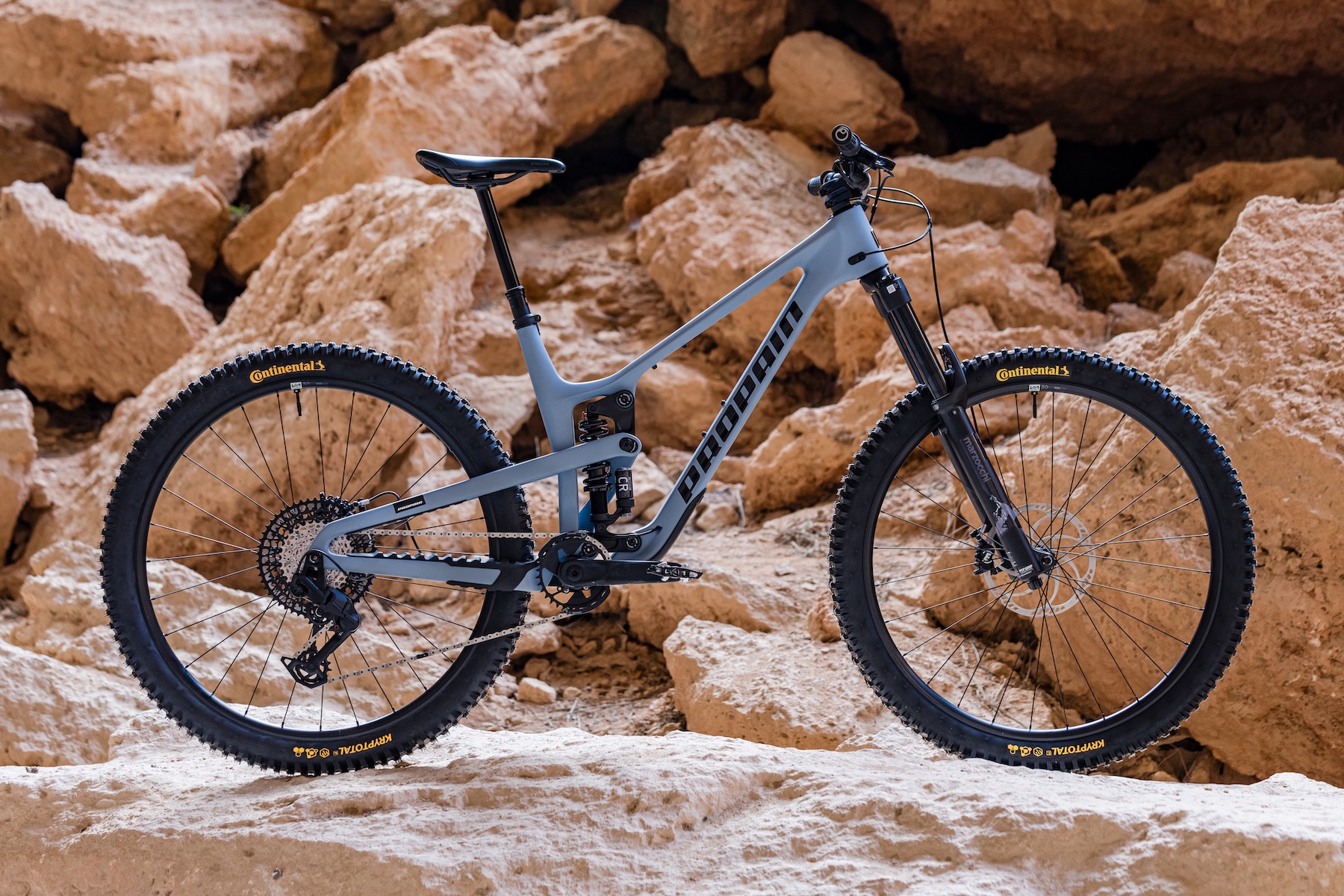
Suspension-wise, kinematics remain identical to the prior Tyee. That means 160 mm of rear travel with 113% anti-squat at sag, and compatibility with both coil and air shocks.
The changes begin to emerge when looking at some of the finishing details. Home mechanics will likely be pleased to see that the Tyee no longer uses a headset-only cable routing design, with more traditional internal routing now on offer. Fans of the headset routing option can still go that route, though, with the choice of a ported Acros headset cover or Propain’s own stem-routed option, which relies on a special Sixpack stem design.
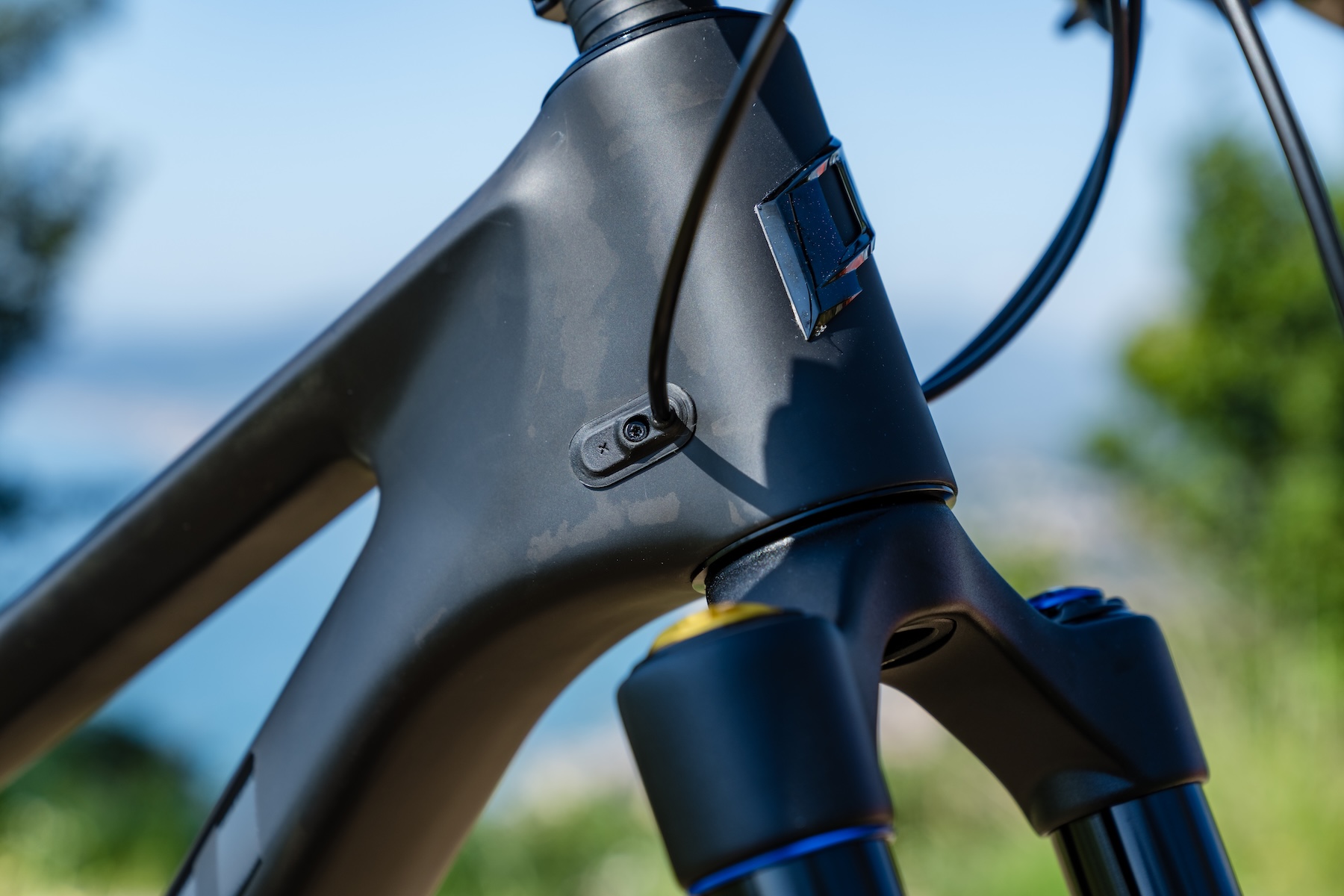
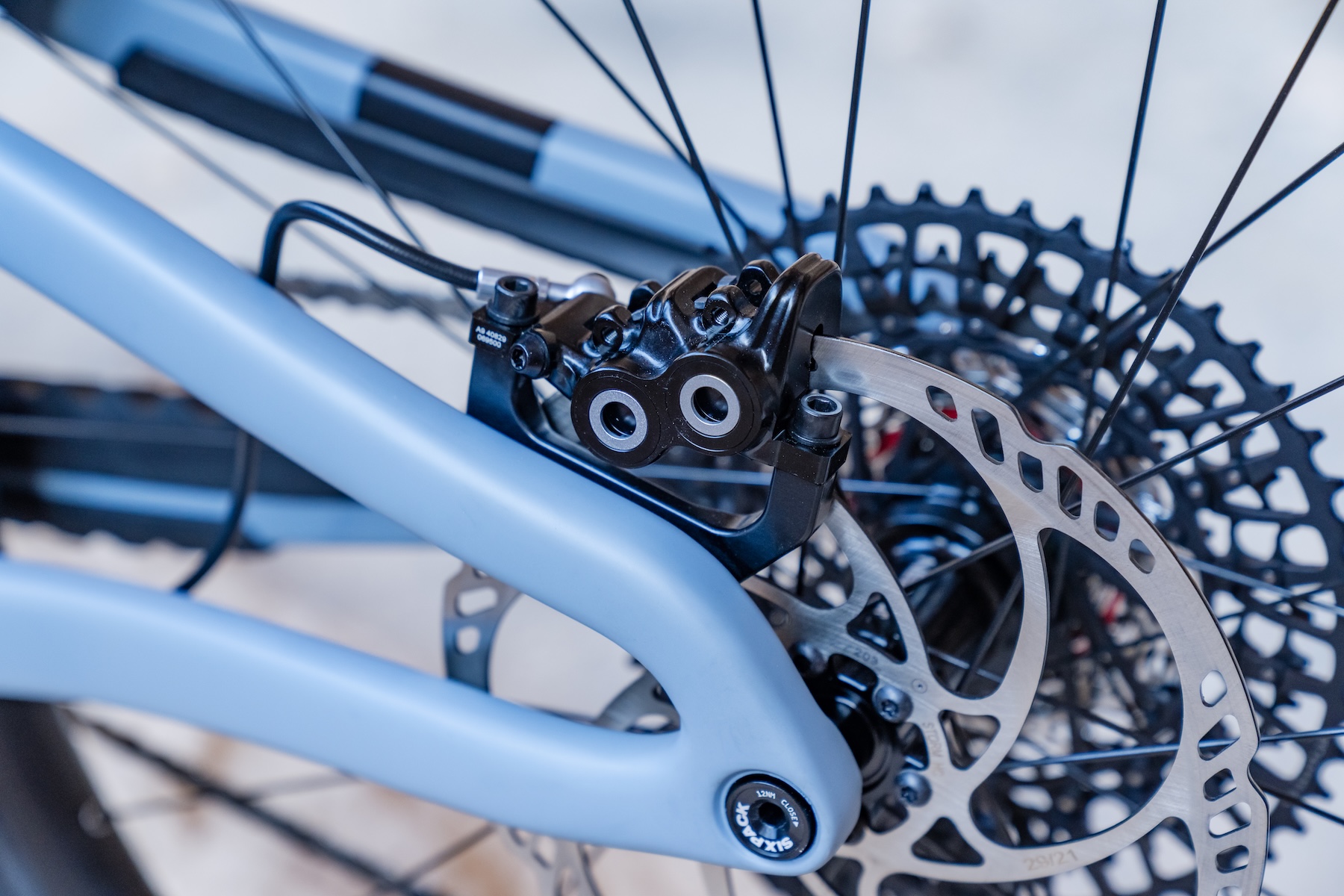
Propain has also gone away from their prior brake mount design on the carbon frame, which tucked the brake caliper inside the rear triangle. The new design should be more accommodating of different caliper designs while being easier to access for basic maintenance. The aluminum frame already had a more traditional arrangement and is unaffected.
Fit & Geometry
Propain also kept the Tyee’s geometry the same as the prior version, but there are some differences through the geometry chart, thanks to a taller assumed fork height. For example, the prior geometry chart assumed a 581 mm fork length (axle to crown) for a 170 mm fork with a 29’’ front wheel, whereas the new geometry chart shifts that measurement to 586 mm. It’s a small change, but has cascading effects throughout the listed geometry figures in making the head tube angle slightly slacker, reach slightly shorter, etc.
As mentioned above, the two position flip chip is meant to preserve geometry when swapping between the 29’’ and mixed wheel options. Typically, that means running the Low position with dual 29’’ wheels, and the High position for mixed wheel setups. The High position is also the recommended setting for the full 27.5’’ frames. That said, Propain says you can run what they call the “Shred Setting” on both the full 27.5’’ bike and with a mixed wheel setup by running the flip chip position in Low. The result is a very slack and low setup, which Propain says increases the risk of pedal and chainring strikes.
Let’s use a Large frame to understand what that all looks like. In the recommended settings for mixed wheels (flip chip in High) and for 29’’ wheels (flip chip in Low), the Tyee has a 473 mm reach, 63.9° head tube angle, 635 mm stack height, 622 mm effective top tube length, a fairly modest 22 mm bottom bracket drop, and 445 mm chainstays. When adopting the Shred Setting with mixed wheels by dropping into the Low flip chip position, reach shortens substantially to 460 mm while the head tube angle slackens to 63°, and the bottom bracket drop nearly doubles to 40 mm. It’s not a setting I’d likely use for day-to-day trail riding, but it could be a viable option for bike park riding or shuttling. Just watch those pedals.
Detailed geometry is as follows for all sizes and wheel size options is as follows:
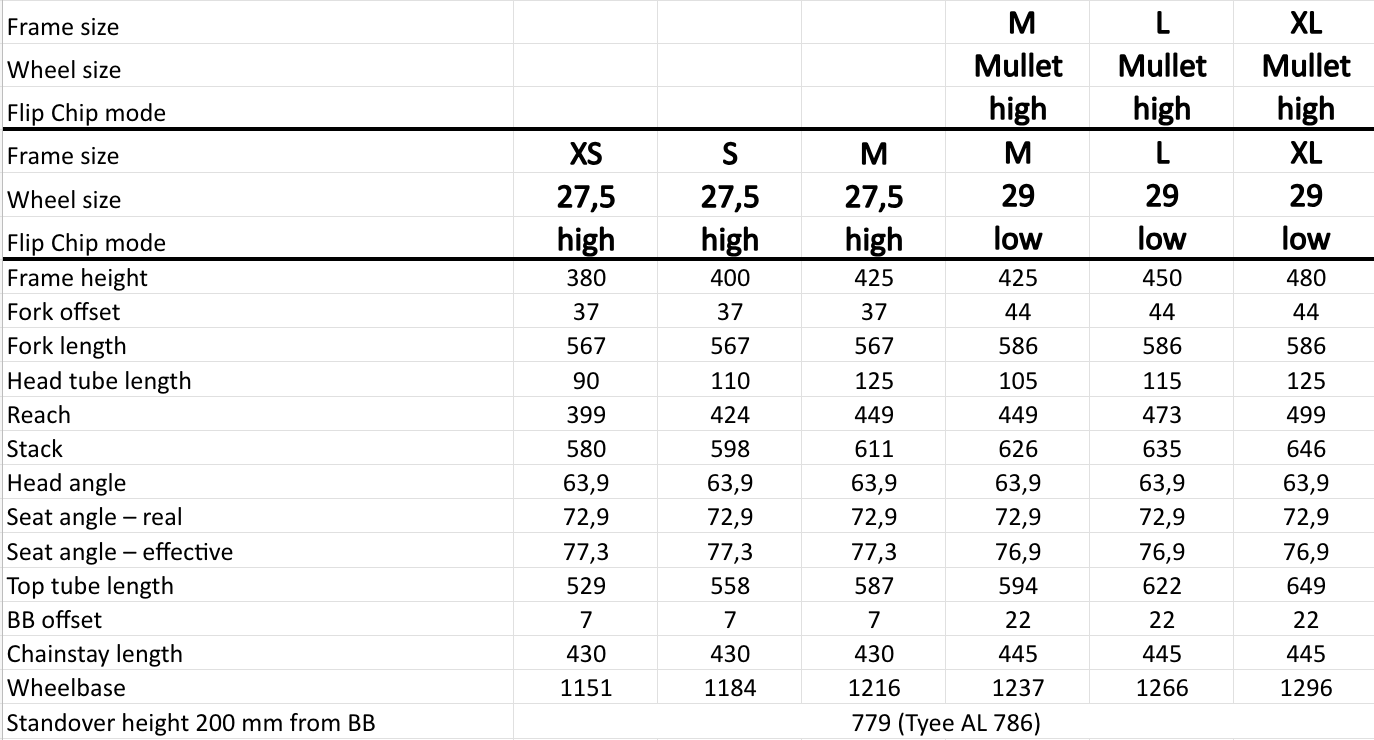
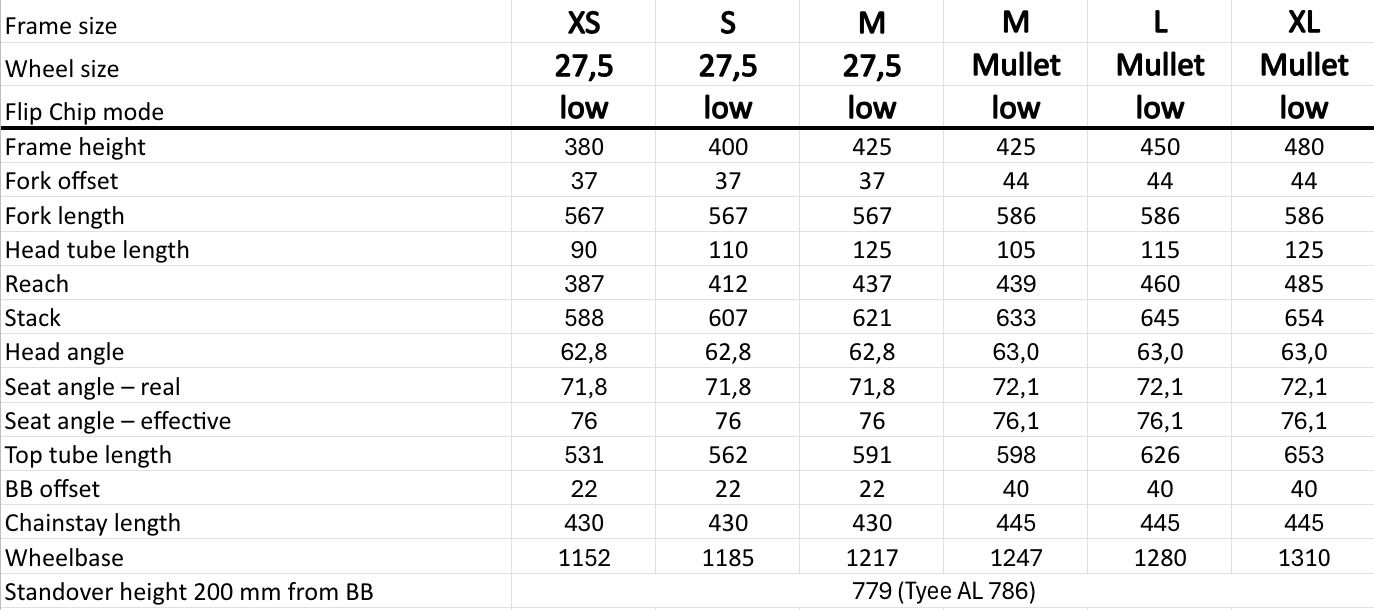
The Builds
Propain offers two standard “Signature” builds in North America, along with their full custom option via their online configurator. Both Signature builds feature SRAM shifting, with mechanical Eagle 70 Transmission on the lower spec Signature 1 build, while the Signature 2 build gets electronic GX Transmission. The Signature 1 build opts for Marzocchi suspension front and rear, Magura MT brakes, and alloy wheels from Crank Brothers. The Signature 2 takes things up a notch with Ultimate-level fork and shock from RockShox, SRAM Maven Silver brakes, and DT Swiss EX 1700 wheels. OneUp V3 droppers come on both versions, too.
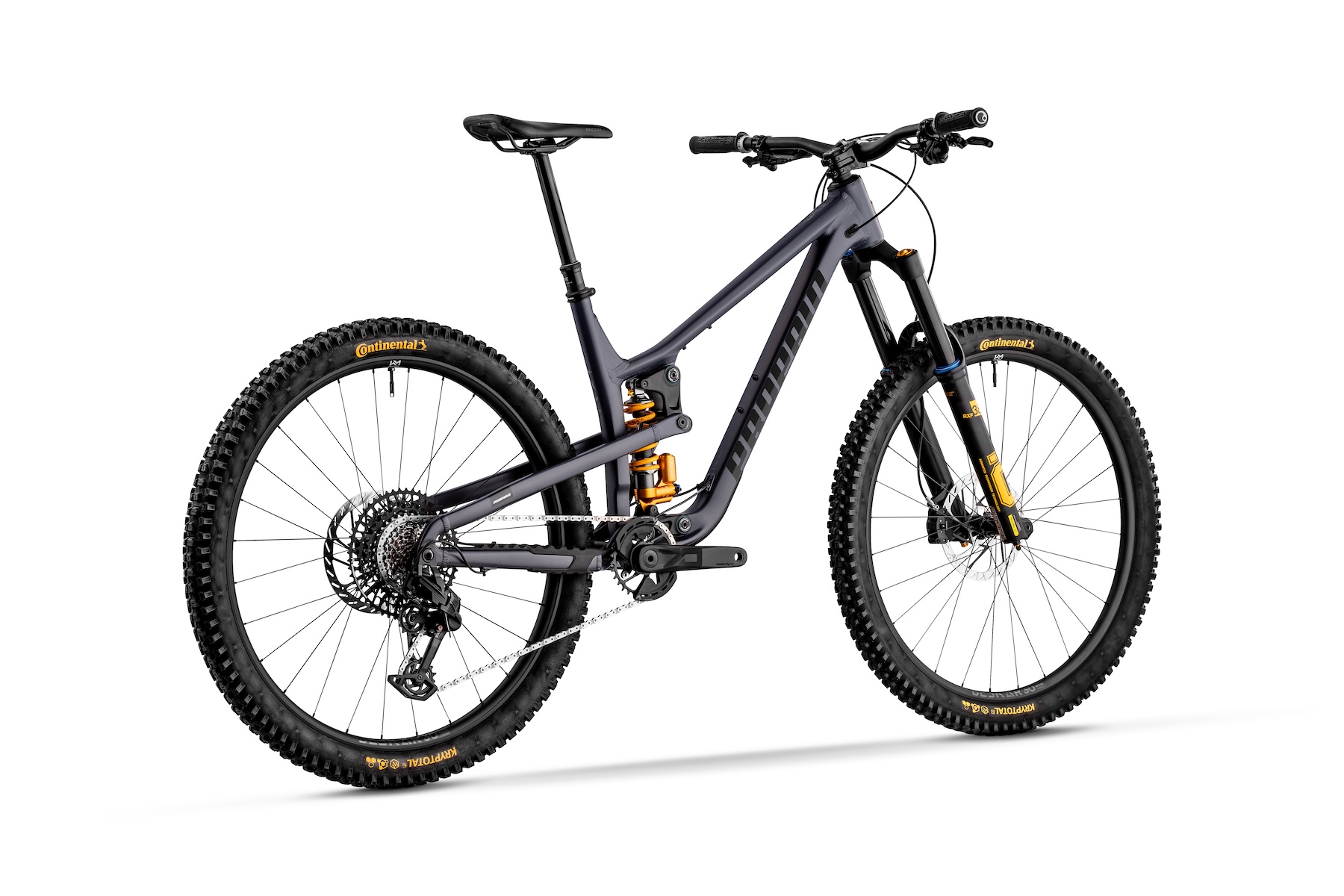
Both builds are available for either aluminum or carbon fiber frame options, with the carbon fiber option tacking $600 USD to the asking price. Of course, Propain’s online configuration tool allows ample customization of parts to suit your fancy — including full custom options — so there should still be plenty of ways to tailor these builds to your liking. You can also pick your desired dropper length, wheel size configuration, etc.
Frame kits are also available, starting at $1,869 USD for the aluminum frame and $2,499 for the carbon one.
Full build details are as follows:
- Drivetrain: SRAM Eagle 70 Transmission
- Brakes: Magura MT5
- Fork: Marzocchi Bomber Z (170 mm)
- Shock: Marzocchi Bomber Air
- Wheels: Crank Brothers Enduro Alloy
- Dropper post: OneUp V3 (different lengths configured during build)
- Drivetrain: SRAM GX Transmission
- Brakes: SRAM Maven Silver
- Fork: RockShox Zeb Ultimate (170 mm)
- Shock: RockShox Vivid Air Ultimate
- Wheels: DT Swiss EX 1700
- Dropper post: OneUp V3 (different lengths configured during build)
FULL REVIEW
The biggest change to the updated Propain Tyee is the addition of downtube cable routing ports to do away with mandatory headset routing — a welcome change, to be sure. And while the Tyee is otherwise mostly the same bike that we reviewed a couple of years ago, the update allowed us to get a fresh perspective on the Tyee, and see how it stacks up in an Enduro bike market that’s evolved quite a bit in those last few years. Here’s what we found out.
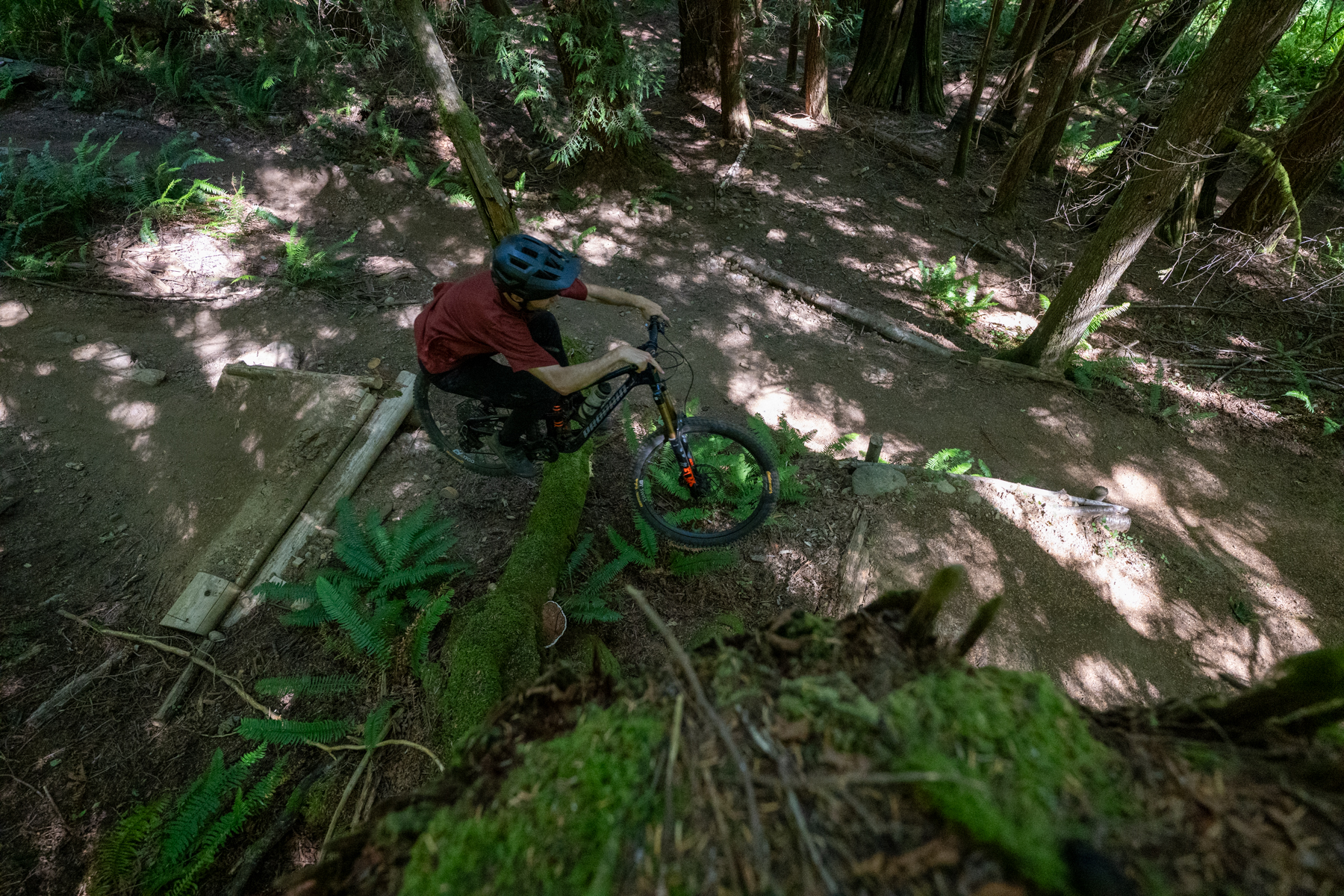
Fit & Sizing
Xan Marshland (5’10”, 160 lb / 178 cm, 72.6 kg): I often land on the brink between Medium and Large bikes, but the size Large Tyee was an obvious choice. I tend to like long rear centers and reach numbers in the realm of 470 mm, and our test bike’s 445 mm chainstays and 473 mm reach felt natural out of the gate. Weighting the front end from an upright position was intuitive, as was pulling up the front end to get the bike off the ground.
The only elements of the Tyee’s fit that stood out upon the first ride were its fairly short seat post insertion depth and slack-ish actual seat tube angle. While I’m typically able to squeeze a 210 mm dropper into most frames, I ended up needing to significantly reduce the travel of the Tyee’s Fox Transfer. More on that — and some notes on the seat tube angle — under the “Climbing” section, below.
David Golay (6’, 160 lb / 183 cm, 72.6 kg): I’m a bit taller than Xan, but I also got along well with the fit of the Large Tyee. The fit of the Large frame is definitely on the more compact end of my typically preferred range, but still within it, and not trying to size up aggressively feels like a good compliment for the Tyee’s somewhat playful nature — which we’ll get into more in a minute.
I think I could ride an XL Tyee if I wanted to make it more stable and composed at speed at the expense of some of the playfulness I just alluded to, but I’d be worried about the seated pedaling position feeling a little more stretched out than I’d prefer — as Xan noted, the Tyee’s actual seat tube angle isn’t especially steep. But I don’t mean that as a criticism. On a more stable, game-on bike where I wanted to size up more, I’d prefer a steeper seat tube to reign the seated cockpit position back in; on the more playful Tyee, making the seated cockpit a little longer than average relative to its sizing when standing up and descending feels very coherent.
Climbing
Traction & Support
Xan: The Tyee delivers an efficient ride over smooth ground and technical terrain alike. ‘Balanced’ is the best word to use here, especially when many of the bikes that feel the most efficient on pavement aren’t the most compliant when it comes to delivering traction over bumpy or loose surfaces.
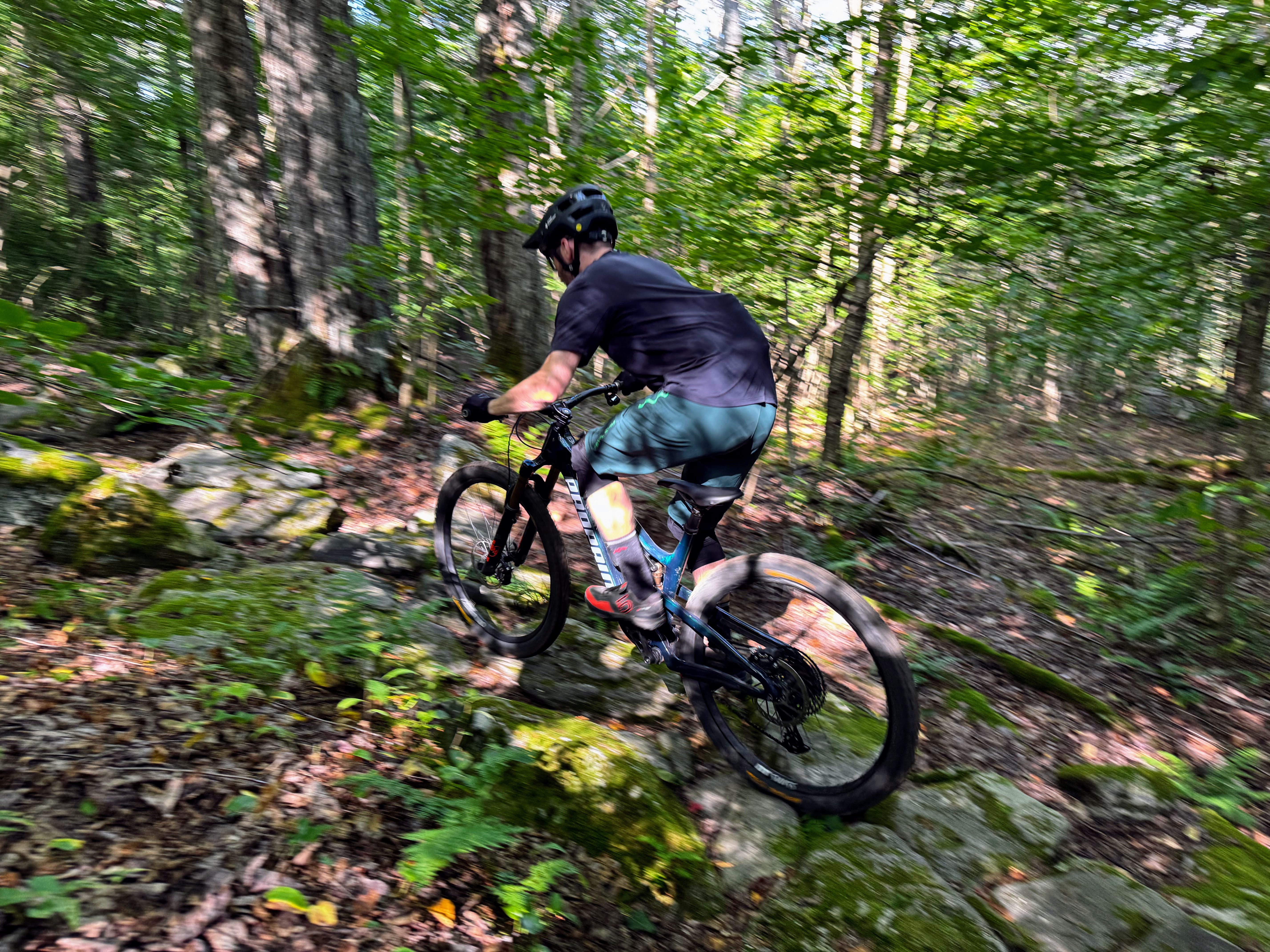
The Tyee, on the other hand, tracks impressively over roots and square-edged rocks, all while retaining a decently snappy feel on fire road climbs. This is commendable for a bike with 160 mm of rear travel, and for this trait alone, the Tyee could be a promising choice for those who intend to put in lots of miles of chunky terrain aboard a long travel bike.
The bike’s long-ish chainstays help keep the front end planted through tricky uphill sections, but not to the extent that pedal ratchets and maneuverability are hindered elsewhere. Altogether, the Tyee does a solid job of keeping momentum high and rider inputs minimal.
David: Yup. I’d rate the Tyee as being a little above average for a ~160mm-travel Enduro bike when it comes to pedaling efficiency, while still maintaining pretty good traction and compliance under power, too. Its performance is nicely balanced, rather than feeling like it’s way off on one end of the spectrum or the other, just biased a little bit toward the efficient side of things.
Climbing Position
Xan: As mentioned earlier, one element of the Tyee that I didn’t love was its seat tube. Especially on longer, steeper grinds, I found myself wishing for a more central, in-between-the-wheels stance.
Granted, at 77.3 degrees, the geometry chart’s stated effective seat tube angle isn’t by any means slack, but I suspect that its somewhat slack actual seat tube angle plays a role here, especially when running the post fairly high. Since this actual seat tube angle is only 72.9 degrees, the higher you run your post, the closer you feel to the rear axle.
This is especially frustrating, knowing that it was this very same seat tube that restricted me from the full 210 mm of dropper travel that I can typically get out of bikes of this size.
So here’s my hot take, delivered from the comfort of my armchair: Propain could have just straightened and steepened the seat tube a hair more, which would have simultaneously enabled a better seated climbing position and unlocked the ability to run a slightly longer dropper by mitigating the kink in the seat tube where it runs out of clearance. Two birds, one stone.
David: I got along better with the Tyee’s pedaling position than Xan did, though he’s right that the seatpost insertion could be better, and the actual seat tube angle is a little on the slack side — I’m just not complaining about that latter point.
While the Tyee’s seatpost insertion is indeed limited, I was (just barely) able to run a 210 mm Fox Transfer at full travel, which is enough for me to be happy with. I can run 240 mm droppers in a lot of modern Enduro bikes, and would certainly prefer to have the option in the Tyee, but the limitation wasn’t super impactful for me.
I didn’t have the same issues staying over the front end of the bike that Xan mentioned, either. My best guess is that my extra height just makes it easier for me to get weight back over the front without feeling like I need to be hunched forward so much, even though I run my seat higher and thus end up with my hips a little farther back than he does.
Would I be mad about the Tyee having a little steeper actual seat tube? Nope. But I would be more tempted to size up to the XL if it did, since that would shorten the effective top tube and make the seated pedaling position more compact. As it is, the Large Tyee worked well for me.
Descending
Xan: For a bike of its numbers, the Tyee is a notably lively and playful descender. On low to medium speed, chattery technical sections, it feels incredibly sensitive in its initial stroke, muting and conforming to the terrain, much as it does under power. It also thrives in the air, delivering a nice balance of pop and predictability off built-up lips and natural takeoffs alike.
Flinging the Tyee into flat corners is also a pleasure. Especially when speeds are moderate and traction is limited, its compliant nature and ample front-end grip encourage its pilot to get on the side knobs and look for exit speed.
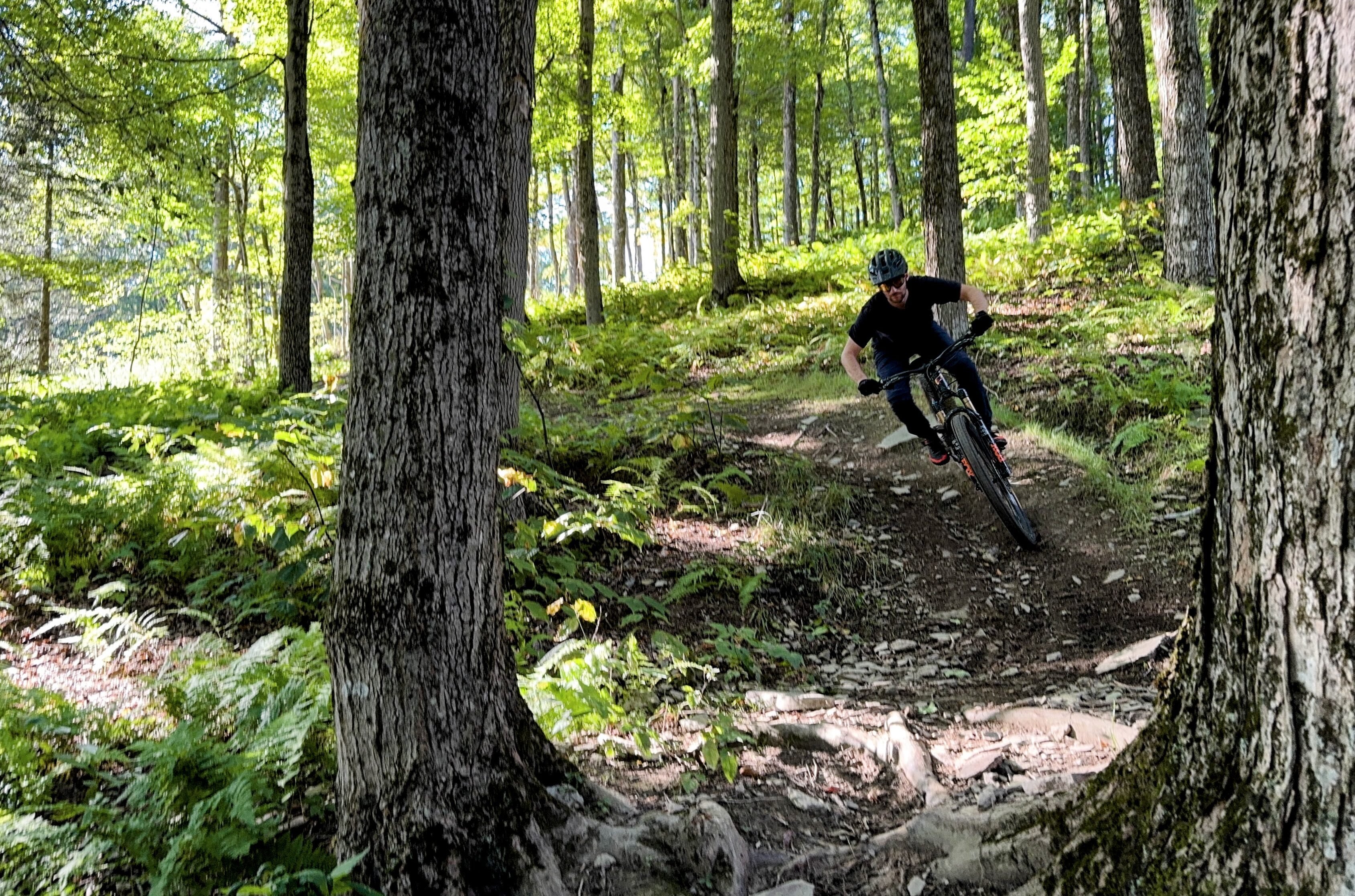
On the flip side, the Tyee feels less stable than many bikes in its class when speeds get higher, descents get steeper, and impacts get harsher. Smashing into big holes and dragging the rear wheel through successive medium-sized hits can unsettle the bike. On consistently rough trails that stick to the fall line, it can feel overwhelmed and imprecise. As a result, I’d be unlikely to choose the Tyee for charging full gas into a blind race stage, but would happily ride it in the many other situations in which dedicated Enduro race bikes are less engaging.
In that vein, it doesn’t take an extended descent to appreciate the Tyee’s strengths. This was especially evident during the parts of this test spent on some less vertically-gifted East Coast trails – be it short downhill tracks or nasty, old school jank. Sneaking in a few extra cranks to pop off a side hit wasn’t a chore; it was rewarding. So was gapping roots to maintain speed over undulating bits of trail.
David: Xan and I are on the same page here. The Tyee stands out for being a playful, lively bike for its travel bracket, and is more engaging on less full-on trails than a lot of more stable, planted Enduro bikes out there. The Tyee is very poppy for a relatively long-travel bike — especially considering that its small-bump sensitivity is quite good, as Xan rightly noted — and is a great option for more playful, freeride-oriented folks who don’t want an ultra-planted, stable sledgehammer of a bike that needs to be going flat out on a burly trail to wake up and come into its own.
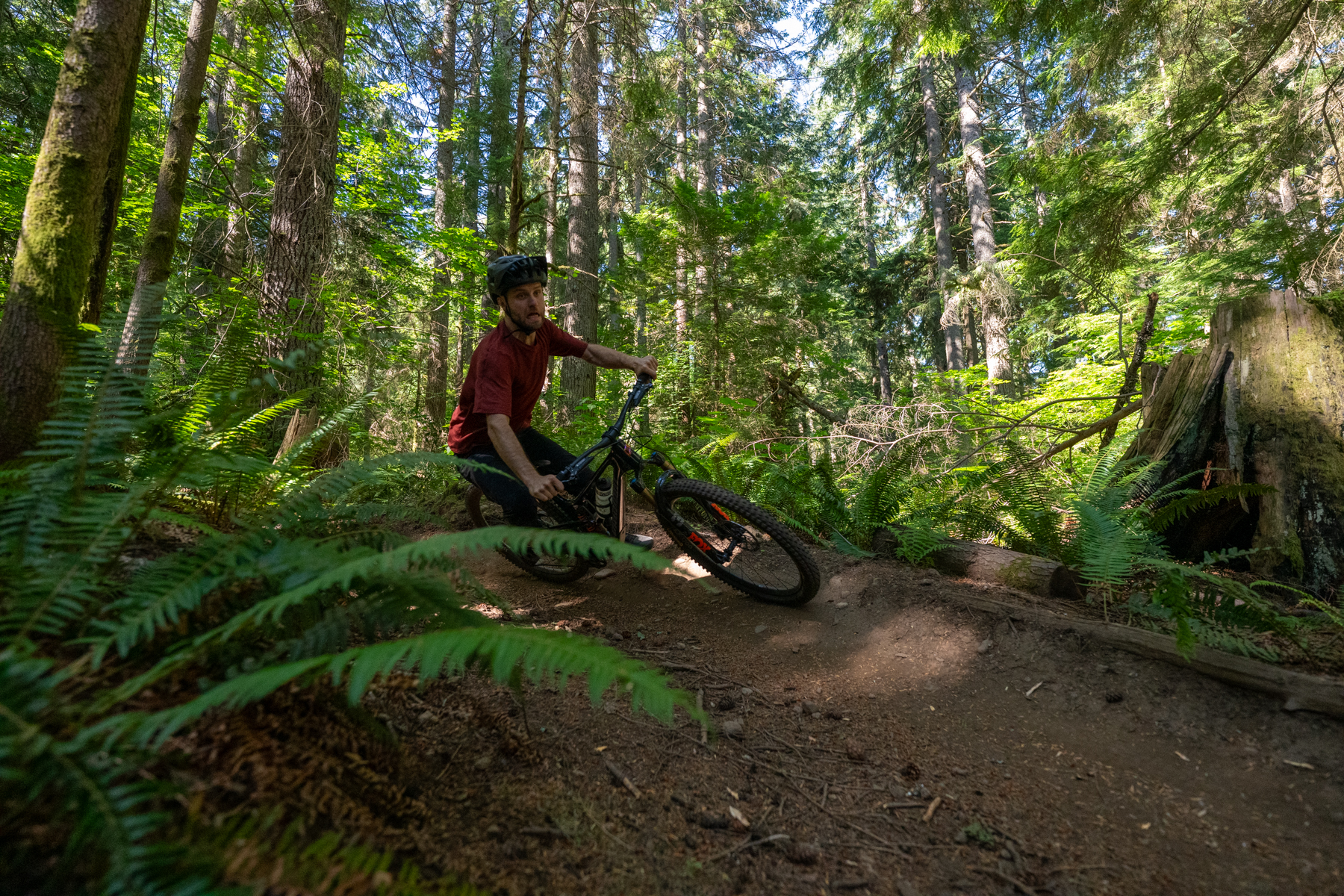
I don’t want to sell the Tyee’s descending chops short — it’s still a proper 160mm-travel Enduro bike, and can handle very burly descents quite capably. It’s just that there are more stable, composed options out there if that’s what you want, though those bikes are rarely as fun and energetic as the Tyee on trails that aren’t just uber-steep and rough.
As I alluded to earlier, I think the somewhat compact fit of the Large Tyee relative to my personal preferences both contributes to that nimble, playful feel, and is a good compliment to it. If the Tyee were inherently a more stable, game-on bike, I’d be more tempted to size up to the XL and lean into that character; as is, keeping the Tyee’s fit (while standing up and descending, anyway) on the compact side and accentuating its sharp handling and playful nature feels like a natural fit. And, as I mentioned in the “Climbing” section, the Tyee’s moderately long effective top tube / seated cockpit (relative to its fit when standing up) helps make me more comfortable climbing on the Large frame than I think I would be if its seated cockpit were more compact.
All told, the Tyee is notably versatile for a modern Enduro bike — both in that it’s a more viable do-it-all All-Mountain bike than most, and in that it’s fun on a wide spectrum of trails that are burly enough to merit an Enduro sled. The Tyee jumps especially well and is a ton of fun on flowier jump lines, but doesn’t feel like a dedicated Park bike that’s just fun in that arena. It’s happy being pushed quite hard on rougher, more technical descents, too, and while the Tyee requires a bit more precision and offers less margin for error than a lot of ultra-stable, game-on Enduro bikes there, it’s notably well-rounded for not going all-in on being an Enduro race bike. In an era where a ton of Enduro bikes feel like they’re verging on pedalable DH bike territory, that’ll be a breath of fresh air for the right folks.
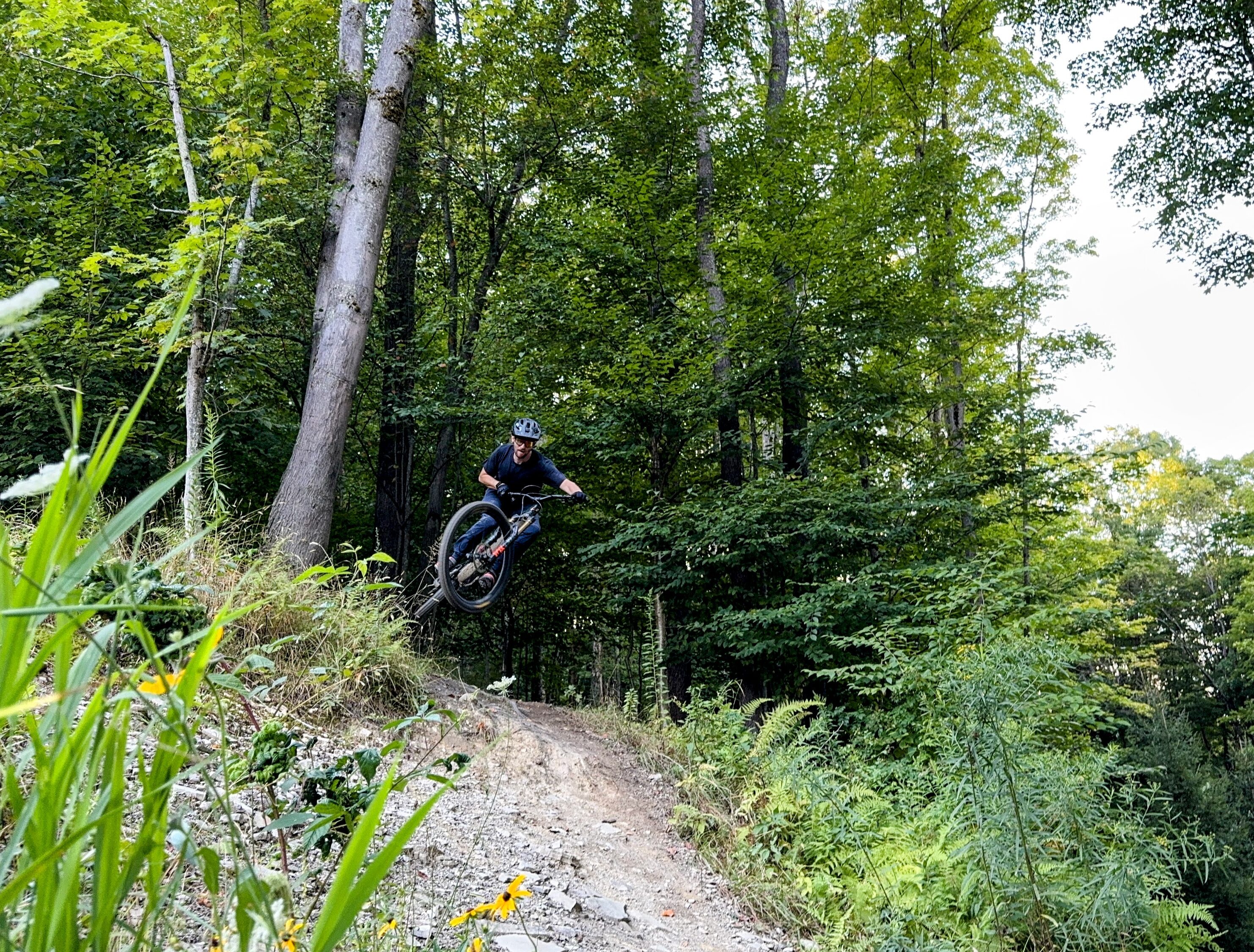
Configurations
29 vs Mixed Wheels
Xan: Our test bike came as a 29er, so I swapped it to a mixed setup for a few rides and rode a stereotypically mullet-friendly mixture of steeps and jumps.
As David mentioned on a recent podcast, we both tend to get along with mixed wheel bikes the best when they’re (A) designed from the ground up as mixed wheel bikes, or (B) don’t significantly sacrifice chainstay length or other geometry attributes when toggling from 29 to mixed.
I tend to agree. Going to a smaller rear wheel usually doesn’t mean that I want the bike’s fore-aft balance to change; it means that I want to enjoy the changes in traction bias, maneuverability, and clearance that come along with it.
To their credit, Propain did a nice job with the flip chip on the Tyee, which doesn’t notably affect chainstay length or perceived balance in corners when toggling between rear wheel sizes. Despite this, I didn’t fall in love with the Tyee in its mixed wheel configuration. As mentioned previously, the Tyee’s suspension can feel a little overwhelmed or unsettled when falling into holes on consistently steep and fast tracks. And while I wouldn’t consider this a blanket concern across all Enduro bikes, adding a smaller rear wheel to the Tyee seems to exaggerate this effect.
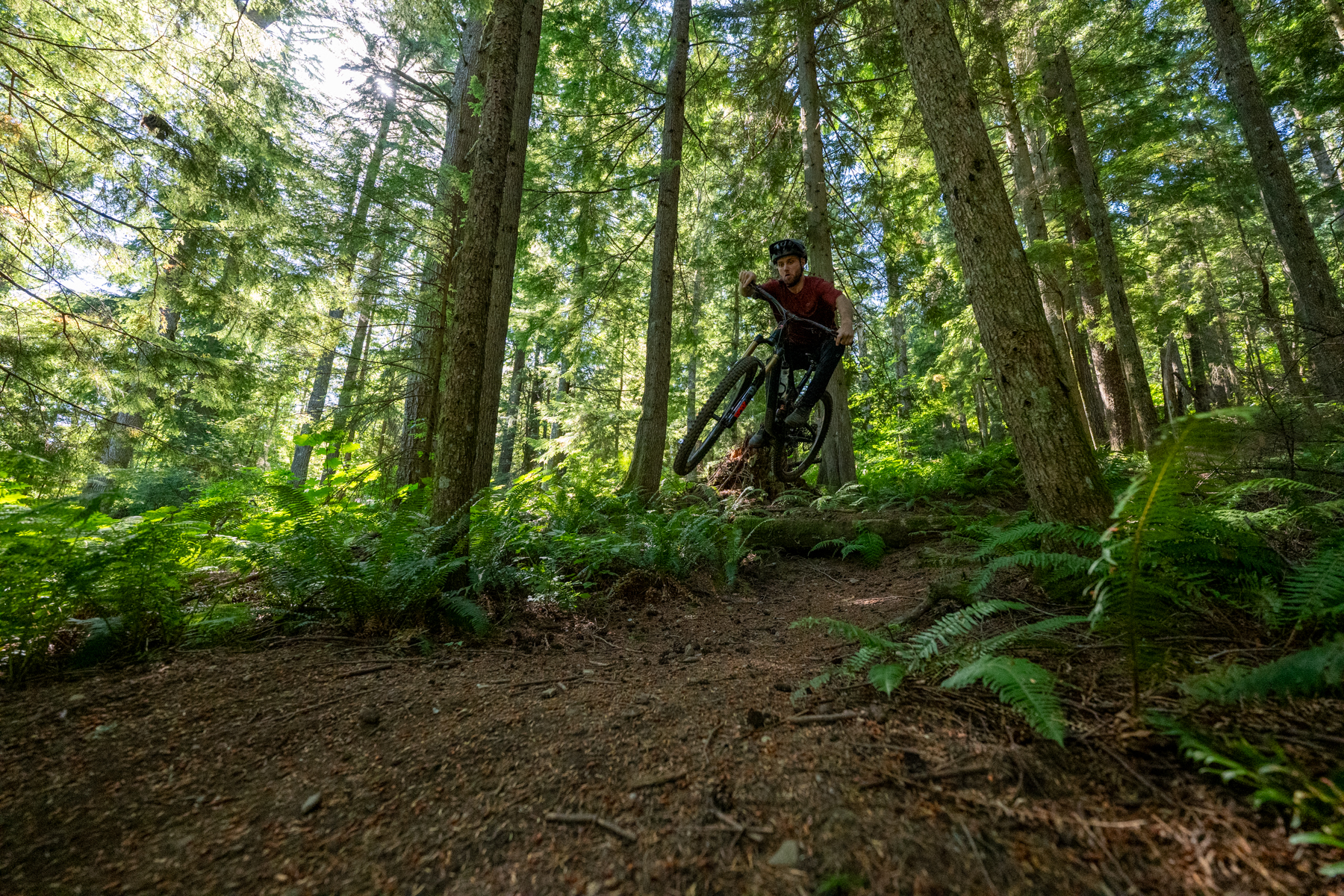
For the rest of the test, I stuck to the 29” configuration, which helps with stability when pushing hard at speed, and more importantly, lets the Tyee shine in the areas that it already excels — namely, carrying momentum and delivering grip over chunky, flatter terrain.
Shred Setting
I also spent some time pedaling and riding lifts in Propain’s extra slackened ‘Shred Setting’ with mixed results. Slackening and lowering the bike noticeably slowed down the steering, but this modification alone didn’t make it that much more sure-footed at speed. Moreover, the Shred Setting also slackens the seat tube angle and moves the saddle even farther back from my preferred pedaling position.
Those who are looking at the Tyee purely as a park bike could certainly get away with using the Shred Setting full time, but as a whole, it would be an odd application for a bike that feels so at home on a wide variety of trails. The Shred Setting takes more than it gives.
Frame Updates
Propain’s updates to this version of the Tyee were minimal; however, the introduction of traditional internal cable routing instead of mandatory headset routing has been the most celebrated revision. The Tyee’s internal routing resembles that of many brands, utilizing rubber plugs to guide the cables into ports on either side of the headtube, though they differ visually from other current models in Propain’s lineup.
Unfortunately, they had a tendency to pop out while riding our test bike. Not a dealbreaker, but slightly better tolerances or a bit of aftermarket adhesive would go a long way.
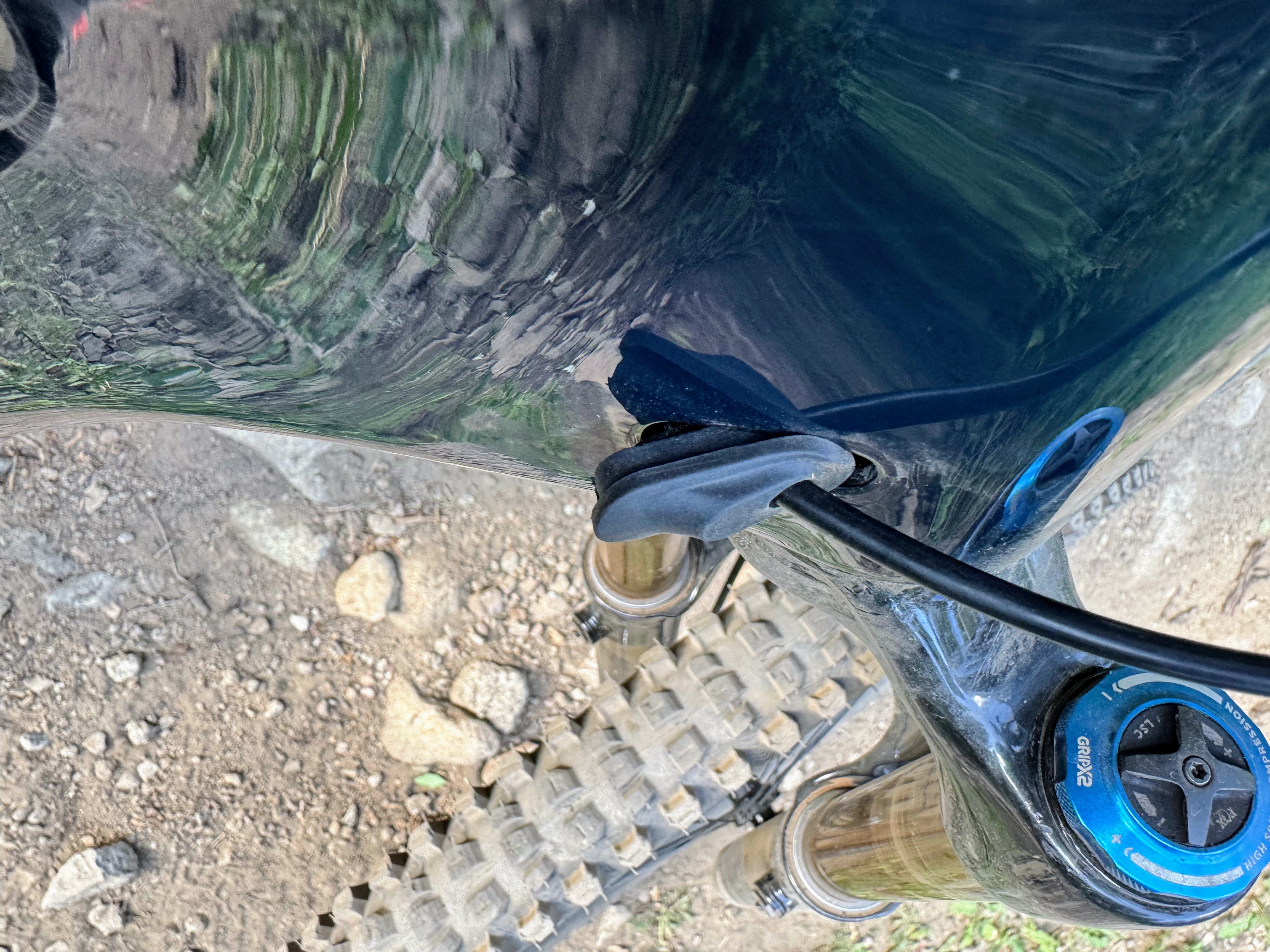
Don’t get me wrong, I’ll take it over headset cable routing any day.
Who’s It For?
If you value the sensitivity, traction, and comfort that bikes in the 160 / 170 mm travel bracket deliver, but suspect that many of today’s Enduro sleds are too single-minded in their pursuit of all-out descending performance, the Tyee should be on your radar. As an Enduro bike that’s enjoyable when you’re not just blasting down the fall line, it’s a very compelling package.
The Tyee is a great option for those who prioritize getting in the air, riding a variety of human-made and natural features, and still value efficiency on big pedal days. And despite its travel numbers and gravity-friendly parts spec, it remains lively, engaging, and straight up fun, even on brief descents and flatter terrain. For some, these traits could even make the Tyee a solid choice as a one-bike quiver.
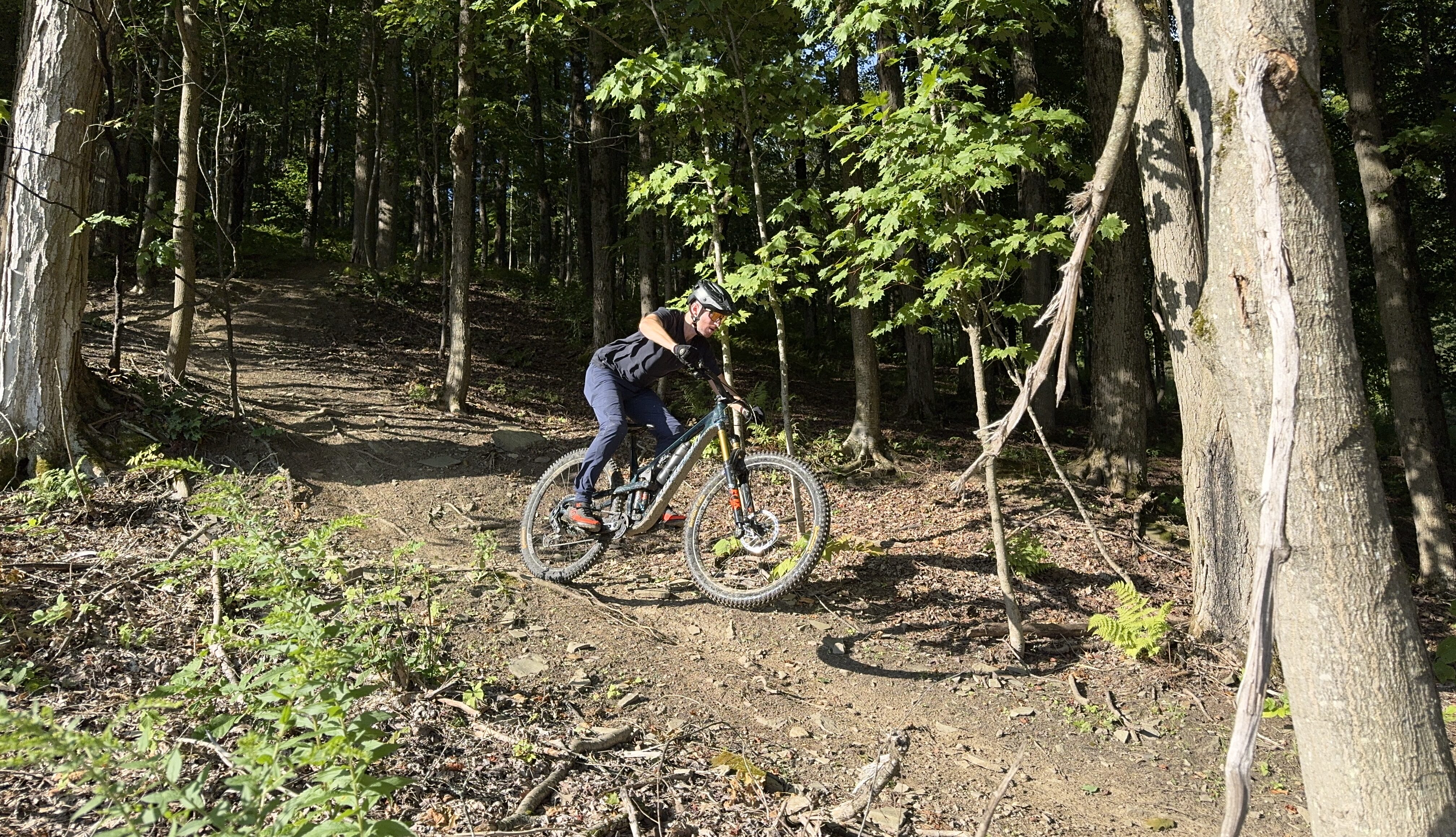
Bottom Line
Enduro bike evolution has largely settled on aggressive, descent-oriented bikes that excel in very specific settings — fair enough, that’s why we love them.
On the other hand, Propain’s updated Tyee is a long-travel all-rounder that remains engaging in a relatively broad range of riding environments. What it gives up in top-end confidence, it makes up for in lively versatility. It’s notably efficient, playful, and energetic-feeling for a 160mm-travel Enduro bike, while still maintaining very solid capability in burly terrain.
Deep Dive Comparisons
BLISTER+ members and those who purchase our Digital Access Pass can check out our Deep Dive comparisons linked below. Get our Digital Access Pass to view all our Deep Dives and Flash Reviews, or become a BLISTER+ member today to get access to that and a LOT more, including the best worldwide Outdoor Injury Insurance, exclusive deals and discounts on skis, personalized gear recommendations from us, and much more.
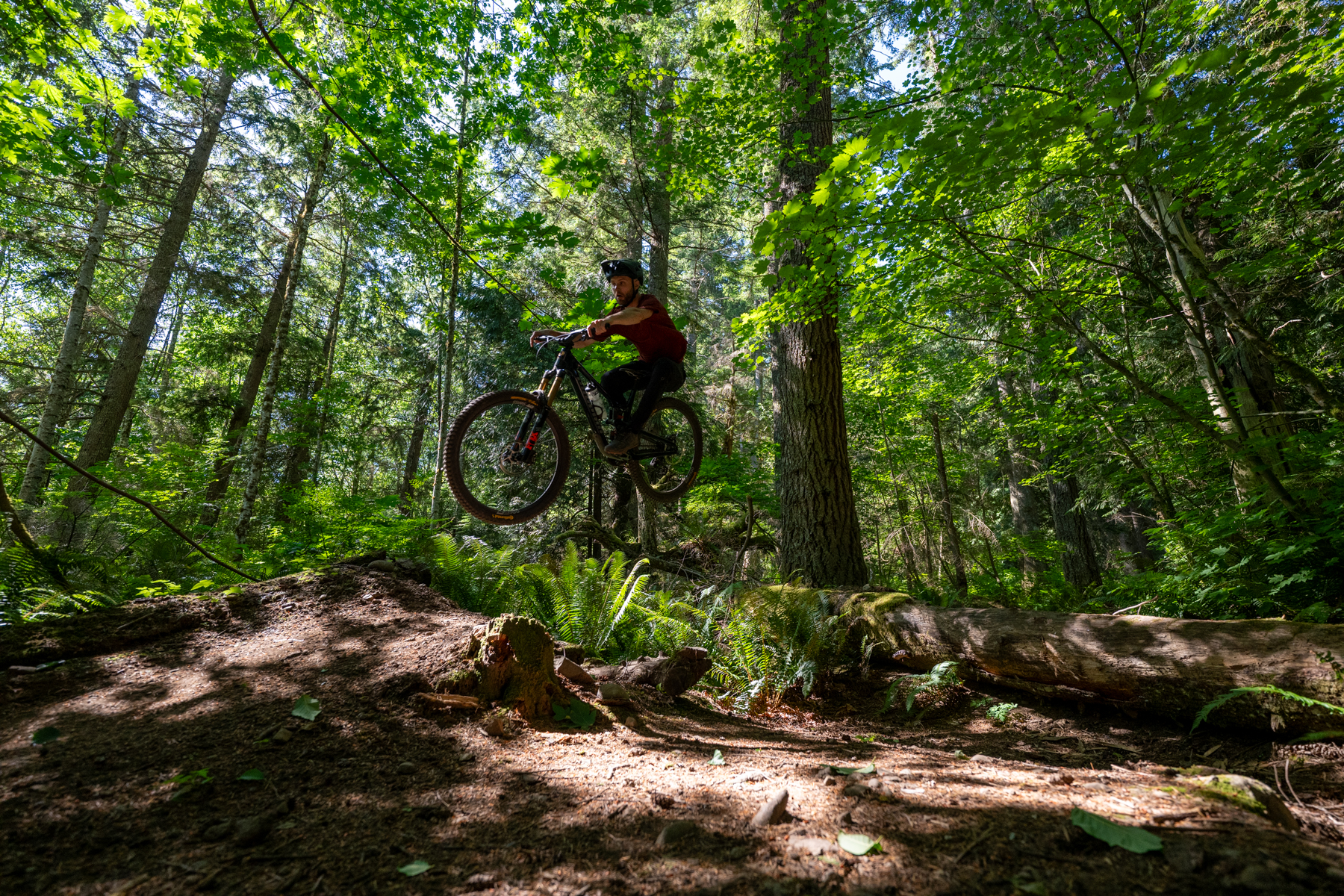
Deep Dive: Propain Tyee 6.1
We compare the Propain Tyee to the Kavenz VHP 16, Yeti SB165, Marin Alpine Trail, Santa Cruz Nomad 6, Pivot Firebird V5, Rocky Mountain Altitude, and Ibis HD6.
Blister’s Flash Reviews and Deep Dives are accessible to those who purchase one of our paid subscriptions
To get our comprehensive Deep Dives and our initial, unfiltered reports on new gear, become a member and receive many other services, deals, and discounts.
If you’re already an active member, please log in.
(If you’re already logged in and a member in good standing and seeing this message in error, please refresh this page in your browser.)

I’ve always been interested in the Hugene. It will be interesting if the upcoming version incorporates many of the same changes.
I have a Hugene for my trail bike and it rips. I slightly enduro-fied the build and it can even handle light bike park days. Super fun.